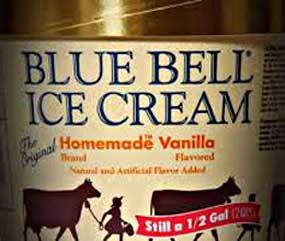Two years ago, scientists at the CDC launched a pilot program to sequence the DNA of every Listeria monocytogenes bacteria sample tied to an illness in this country. As a result, many more outbreaks are being identified, including ones that were hidden.
 Brendan Jackson, a medical epidemiologist with the CDC told Science that “now that we’re turning whole-genome sequencing on, we’re identifying outbreak after outbreak.” The outbreaks are also originating in foods that are usually associated with foodborne illness outbreaks, such as ice cream and caramel apples. This new method identifies gaps in the food safety system and may lead to more testing of foods that were not suspects in outbreaks before now.
Brendan Jackson, a medical epidemiologist with the CDC told Science that “now that we’re turning whole-genome sequencing on, we’re identifying outbreak after outbreak.” The outbreaks are also originating in foods that are usually associated with foodborne illness outbreaks, such as ice cream and caramel apples. This new method identifies gaps in the food safety system and may lead to more testing of foods that were not suspects in outbreaks before now.
The deadly Blue Bell Listeria monocytogenes outbreak, that has sickened 10 people and killed 3, was solved using whole genome sequencing. A nurse at the Via Christi hospital in Wichita, Kansas had noticed a rash of Listeria cases, but standard DNA analysis couldn’t tie the patient samples to each other. Diet records were also inconclusive. But a standard DNA match finally happened early this year.
FDA recalls and public health listservs were searched for any reports of foods contaminated with Listeria monocytogenes. When the nurse heard about a problem with Blue Bell ice cream. Listeria had been found at a distribution center, and was traced to a Blue Bell facility in Texas. FDA got involved, and found a match between the Blue Bell samples and the patients. More cases were discovered going back to 2010.
Whole genome sequencing lets scientists compare every single DNA base pair in samples, which is much more detailed than traditional pulsed field-gel electrophoresis methods. The process is more expensive and costs more, but the results are worth it. At this time, only two states can perform their own sequencing; the rest must send samples to the CDC.




